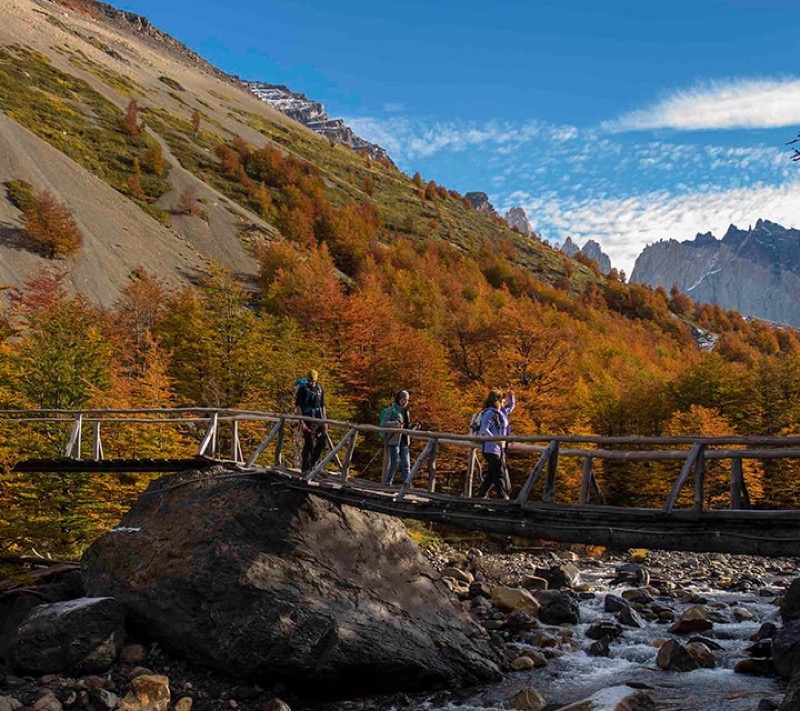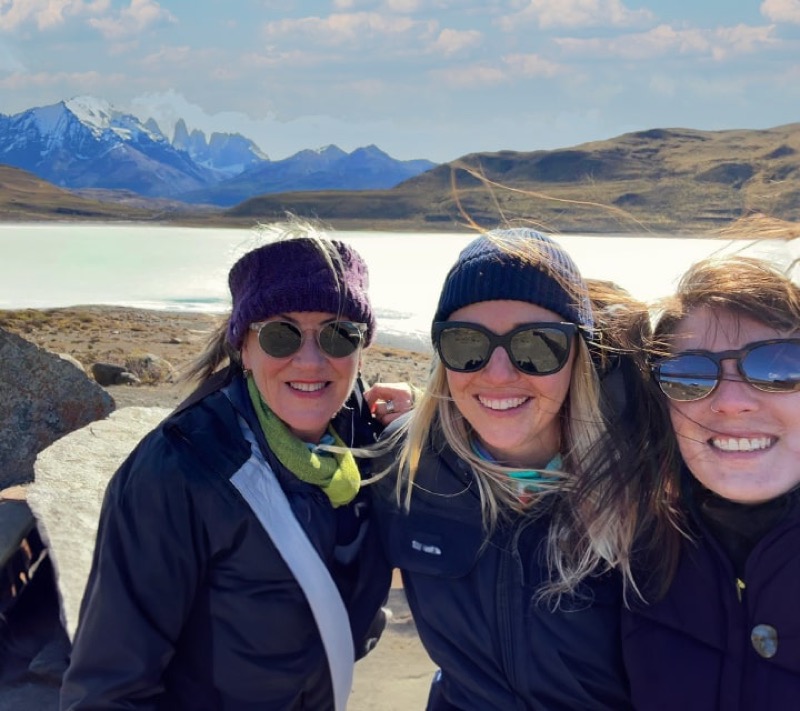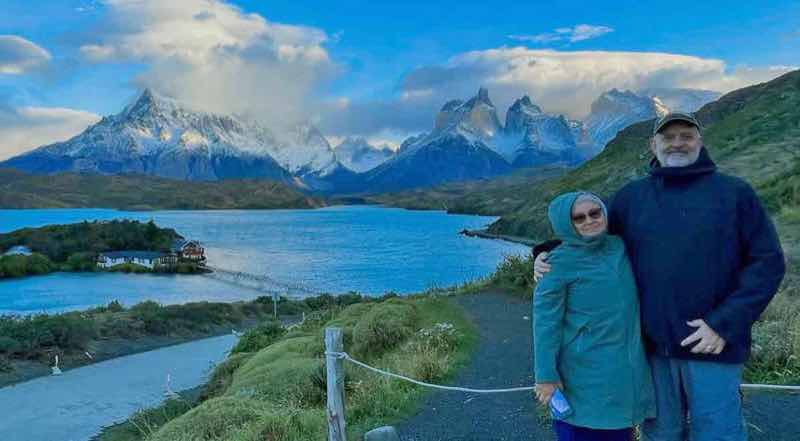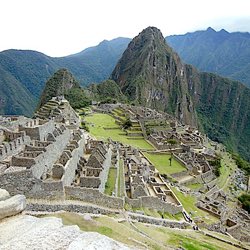Let’s get something out in the open—travel is not just a young person’s game. It’s quite possible that the most rewarding and inspiring travel adventures you ever have will take place in your senior years. Granted, you’ll want to pay serious attention to details that you might have ignored previously; when you’re young, you can just hop on a plane and trust your luck, but now that you’re a little older (and a lot wiser), you’ll want to make detailed plans around your trip to ensure you get the most out of it.
When it comes to traveling to Patagonia, we’ve got you covered in the planning department. From what to pack, to insurance, to must-see attractions and ideal seasons, read on for inside tips and tricks to make your golden years your boldest years.
So what are you waiting for? It’s time to explore Patagonia!
Table of contents: ()
Patagonia: An Unparallelled Outdoor Experience
Patagonia is located in South America and runs from approximately 37° S latitude (the same latitude as Melbourne, AU!) to the lower tip of the continent. Spanning both Argentina and Chile, it’s a rugged and diverse landscape that houses some of the highest mountains in the Western hemisphere, 50,000 miles of coastline, deserts, fjords, grasslands, and forests. Home to a large and diverse collection of flora and fauna, its natural wonder and beauty make it one of the top destinations in the world for adventure and exploration.
Whether you’re a day hiker, backpacker, safari enthusiast, or cruise connoisseur, you’ll have your pick of ways to experience Patagonia. No matter how you choose to travel, the region delivers an unforgettable journey that will call you back time and time again. Let’s explore some of the must-see spots while you’re there!

Hiking on the popular trail to Mirador Cuernos in Torres del Paine
Torres del Paine National Park
One of the most famous destinations in all of Patagonia is Torres del Paine National Park in Chile. It’s as stunning as it is vast, covering 700 square miles of untamed wilderness with an astonishing variety of life and terrain. It’s an absolute must if you’re going to make the journey south!
The Paine Massif is a must-see highlight, featuring multiple hiking trails, like the one along the Ascencio River that takes you to stunning views of its three towers. If you’re feeling fit, a scramble up to the lagoon will give you an up-close view of the Torres del Paine—the iconic granite towers at the culmination of the hike.
From scenic drives to short walks, day hikes, and beyond, Torres del Paine National Park offers trail options for travelers of all accessibility needs, and make sure to keep your eyes open for condors and black-chested buzzard eagles along the way!

Easy Ice hiking at the Perito Moreno Glacier
Los Glaciares National Park
Whether you’re hoping to explore on your own or as part of a tour, Los Glaciares National Park in Argentina is home to countless opportunities for breathtaking views. Chief among them in this paradise of white and blue is Perito Moreno Glacier, a gigantic wall of ice blocking that regularly calves huge chunks of ice into the frothing waters of Lake Argentino below.

Having mate tea with a local gaucho at an Estancia in Argentina’s Los Glaciares National Park
Several species of small deer inhabit the park, condors soar overhead, and the curious (but unrelated) ostrich-like birds called rheas will quietly observe visitors out trekking, horseback riding, kayaking, boating, and hiking.
El Chalten
This tiny community on the edge of Los Glaciares National Park is a perfect basecamp for all your adventures in the region. Known as the “National Capital of Adventure in Argentina,” this quaint little town gives you access to dozens of the most gorgeous trails and natural attractions that make Southern Patagonia one of the most extraordinary travel destinations out there.
El Chalten is also a fantastic destination for safaris. If you’ve never been on a true safari, you’re missing out on one of the most rewarding and stress-free ways to experience the beauty and diversity of the natural world.
Overland Safaris
An overland safari gives you the chance to explore everything Patagonia provides without having to hike much. You’ll be able to cover all the regional highlights of the most sought-after outdoor experiences in the luxury and comfort of a fully-guided private vehicle tour.
A great option for animal lovers, an overland safari can get you up close and personal with the region’s incredible wildlife. For example, the Patagonian Puma is the largest big cat on the continent, and observing these secretive and majestic predators in the wild is an unforgettable experience.

Admiring the glacier calving phenomenon at the boardwalks of the Perito Moreno Glacier in Argentina
Curated Living
Are you a glamper or a hotel enthusiast? Do you love sampling local cuisine? Whatever your tastes, Patagonia delivers memorable accommodations and gustatory experiences galore.
Lago Grey Hotel
This crowning glory of Torres del Paine in Chilean Patagonia is perfectly situated next to its namesake lake and commands breathtaking views of the Andes Mountains. Not only is it a comfortable and attractive locale, but it’s the perfect starting point for excursions into the park, glacier tours, waterfalls, and condor viewing.
Eolo Lodge
On the Argentine side, Eolo Lodge is one of many spectacular properties you can enjoy on your journey. In contrast to Lago Grey Hotel, this gem sits halfway between Los Glaciares National Park and the town of El Calafate in Patagonia’s southern steppes. Sporting 10,000 acres of gorgeous wide-open grasslands, Eolo Lodge is a horseback rider’s paradise and provides limitless options for cyclists, birdwatchers, and those simply looking to connect with the peace and tranquility of the open air.
Patagonian Cuisine
One of the great joys of traveling is experiencing regional flavors, and Patagonia gives its visitors nearly limitless opportunities to sample sustainable, farm-to-table dining at its lodges and estancias.
If you’re a fan of barbeque, you’re in for a treat: the regional cuisine is strikingly colorful, hearty, and rich, with a strong emphasis on meat dishes. Don’t be surprised to see an entire pig rotating leisurely over an open fire! If meat doesn’t strike your fancy, take the opportunity to sample fresh seafood, wild mushrooms, and delicious sweets.

Photo on a day without wind in Lake Pehoe, Torres del Paine National Parlk
Creating the Perfect Trip
Step one: let’s talk activities.
Patagonia spans 260,000 square miles of mountains, plains, forests, and coast, and activities can range from laid-back to extremely strenuous. Taking into consideration your health needs, fitness level, preferred pace, and unique interests is important for deciding where and how to experience Patagonia.
If you’re an avid hiker, you’d find enjoyment in exploring Torres del Paine National Park and its many hiking trails; for a more relaxed approach, perhaps you’d be best suited with an overland safari trip to see wildlife and terrain from the comfort of a vehicle.

Stopping for photos and viewing around Torres del Paine National Park. The 3 towers in the background
Safety First
Safety is also a factor to keep in mind. For seniors, travel and exploration are both invigorating and extremely beneficial for mental health and well-being, but exploring rugged terrain and new environments shouldn’t mean taking risks you aren’t completely comfortable with. Any trip can be tailored to your comfort level and personal needs, so think carefully about what’s going to deliver the experience that will be most rewarding.
Here are a few helpful hints from experts on how to plan for safety and well-being:
- Keep your eyes out for travel alerts and public health guidance. From pandemics, to travel advisories and weather events, you’ll want to know where it is safe to travel to.
- Find lodging that meets your needs. Don’t hesitate to contact accommodations directly to discuss your specific needs.
- Remember medications. Make sure you have a list of your medications, and that you have enough of your required medicine to last your entire trip, plus a little extra. Plan for your health needs through all your actual traveling, like in airports and other transportation.
- Consider the overall arc of your trip. It’s never fun to plan your dream trip and realize halfway through that you’re too exhausted to enjoy the rest of it. Worse, overexertion can cause injuries that may disrupt some of the activities you were most excited about in the first place. Make sure you schedule some time to rest, relax, and recuperate from strenuous activities and pace out the big picture. Trust us: your feet will thank you!
- Bring an emergency contacts list and a list of any health conditions you may have.

Hiking in the fall in the trail to the Base of the Towers in Torres del Paine National Park
Learning the Language
Spanish is the official language in Patagonia, but it’s a multilingual region and you can expect to hear a few pockets of German, Mapudungan (a local language), and even some Welsh! In tourist-centered areas, there is typically a lot of support for many different languages, particularly English. However, when you’re out in the countryside you shouldn’t expect the locals to be able to understand anything but their own language (Spanish).
Of course, it can be useful to learn some basic Spanish phrases just to make sure you’re comfortable in airports and in local restaurants and shops. It’s not required, but it can make your time in Patagonia less stressful and more rewarding. Having the Google Translate app installed on your smartphone is also a great idea in case you encounter any language barriers along the way.

At the end of the trail to Mirador Cuernos in Torres del Paine
Packing For Patagonia
Your packing list is largely dependent on what activities you plan to engage in while exploring Patagonia. Let’s start with the important stuff. These are the things that, if you forget, will make your trip at best unpleasant, and at worst, unbearable.
Essentials
- Passport
- Medications
- Day bag/pack
- Sunglasses
- Layers
- Sun protection
- Toiletries
- Water bottle
- Travel Insurance
- Snacks
- Personal identification
- Face mask/hand sanitizer
Hiking/Outdoor Adventuring
- Hats
- Gloves
- Hiking boots
- Socks
- Comfortable layers
- Wind/waterproof outer layers
- Trekking poles
- Headlamp
- Batteries/portable battery charger
Electronics
- Camera
- Chargers
- Portable charger packs
- Adapters (220 volt!)
Odds and Ends
- Items specific to your health needs (walking assistance, eyewear, etc.)
- Cash
- Reading material
- A passion for exploration!
Insurance
A lot of time (and, let’s face it, money) goes into the planning of international travel. Purchasing travel insurance for Patagonia is the best way to safeguard against the unexpected, and when you’re older there are a lot of things that can come up unexpectedly and derail a trip.
Trip Cancelation Insurance
There are a whole host of reasons a planned trip may have to be canceled. Illness, natural disasters, political change and upheaval, family challenges, the occasional global pandemic, and just plain bad luck are all causes for canceling or postponing travel.
With trip cancellation insurance, all the funds you’ve spent on flights, accommodations, rental cars, tours, etc., will not have been spent in vain. This type of insurance may have stipulations, so be sure to read your coverage carefully and understand what does, and does not, fall under your insurance plan.
Medical Insurance
International travel, especially to remote places like Patagonia, comes with a certain amount of risk. Patagonia can have an unpredictable climate, fast-changing weather, and other risk factors to take into consideration. Medical emergencies in any country can be costly and without insurance, you may end up with unwelcome (and extensive) vacation costs. Purchasing medical insurance can give you peace of mind and save you from worrying about your health while abroad.
When to Visit
Despite what you may think, there is no “bad” time to visit Patagonia. In fact, Patagonia is a year-round destination and each season has something incredible to offer travelers of varied interests.
That being said, Patagonia is on a comparatively extreme part of the planet. Its northern boundary begins around 40 degrees south latitude, which is lower than the tip of South Africa and descends to within 700 miles of the Antarctic Peninsula. Depending on where you choose to visit, this can make for extreme weather, and you can have between 7 and 17 hours of sunlight depending on the season. Also, don’t forget that the seasons are reversed in the southern hemisphere, so summer in America and Europe is winter in Patagonia!
High tourist season spans from October to April, while the quieter season tends to be May through September. If you’re looking to visit Patagonia around the holidays or common vacation weeks, we suggest you plan at least 6 months ahead to lock in your most desired accommodations and less expensive flights.

Group photo of seniors and family in Torres del Paine
Summer
- December-February
- Great time for kayaking, birdwatching, and photographing wildlife
- The busiest time of year
Fall
- March-May
- Fall foliage provides perfect photo opportunities
- Slightly less busy
Winter
- June-August
- The ideal time for tracking Pumas
- A chance to see snow-dusted Torres del Paine and Los Glaciares National Parks
Spring
- September-November
- Best season for fly fishing and ideal hiking conditions
- Vivid spring colors

Stopping to chat with a local gaucho (cowboy) in Chile
How to Get to Patagonia
Alright. It’s decided: you’ve GOT to go to Patagonia. But how?
We suggest flying into either Buenos Aires (Argentina) or Santiago (Chile). There are convenient direct flights to both cities from U.S. locations like Dallas, Miami, and Atlanta, and other popular locales in Europe like Madrid and Paris.
Both Buenos Aires and Santiago are vibrant and bustling cities, and each has their own unique reason for sticking around for a few extra few days. Plus, you may need some time to acclimatize to a new place, recuperate from your flight, and get comfortable with the local experience in a new place.
It’s ideal to arrive in either place at least two days prior to when your Patagonia luxury tour is set to begin; you don’t want to miss out on your first day of a booked tour because of delayed flights!
From here, you’ll need to take a domestic flight to either Punta Arenas (traveling from Santiago) or El Calafate (traveling from Buenos Aires).

Whale watching off the coast of Punta Arenas in the Magellan Strait
Safety in Patagonia
Patagonia may be one of the safest locations you could dream of as a tourist. Locals are known for going out of their way to extend kindness toward visitors, and because tourism is big business there is a lot of support for travelers available in popular destinations. Nevertheless, we recommend exercising safety precautions in the towns, particularly Puerto Natales in Chile and El Calafate in Argentina.
No matter where in the world you may be, it’s always important to maintain Patagonia’s safety practices. For those travelers setting out on hiking tours and other outdoor expeditions in Patagonia, having an awareness of your current fitness level, health needs and limitations, and staying hydrated can make the difference between an enjoyable outing, and a safety issue.

Panoramic shot of the Paine massif in Torres del Paine National Park
Hit the Road
No matter your age, fitness level, interests, or travel experience, Patagonia is the kind of destination that will redefine your understanding of “magnificent.” If you’ve been under the impression that your traveling days are over, we want you to know that no location is out of your reach.
It’s time to embark on that journey you’ve always dreamed of.
It’s time to discover Patagonia.
- Get a Car Rental
- Book Your Accommodation HERE
- Search for Great Tours HERE
- Get an eSim to be able to use your smartphone abroad.
- Buy Travel Insurance
- Get a universal plug adapter

One Response to “Patagonia Trip Planning for Seniors”
Leave a Reply
Tags: argentina, article, chile, patagonia, senior travel



 2-Week Itinerary in Patagonia: Ultimate Travel Guide
2-Week Itinerary in Patagonia: Ultimate Travel Guide Travel to Patagonia in Chile – Episode 631
Travel to Patagonia in Chile – Episode 631 Travel to Patagonia in Argentina – Episode 531
Travel to Patagonia in Argentina – Episode 531 Planning a Trip to Machu Picchu, Peru For First Timers
Planning a Trip to Machu Picchu, Peru For First Timers

Randy Kane
Says:June 5th, 2024 at 7:44 am
I’d like to visit Torres del Paine. I’m 70 years old and traveling by myself. Most of what I see about TdP is about hiking or trekking, two activities I’m too old for. I can’t walk more than a mile, and even so, my pace would slow the younger folks up. I’d like to go to places where if I drive (International DL required?) or take a bus I wouldn’t have to walk very far to see magnificent scenery. Do you have any ideas?